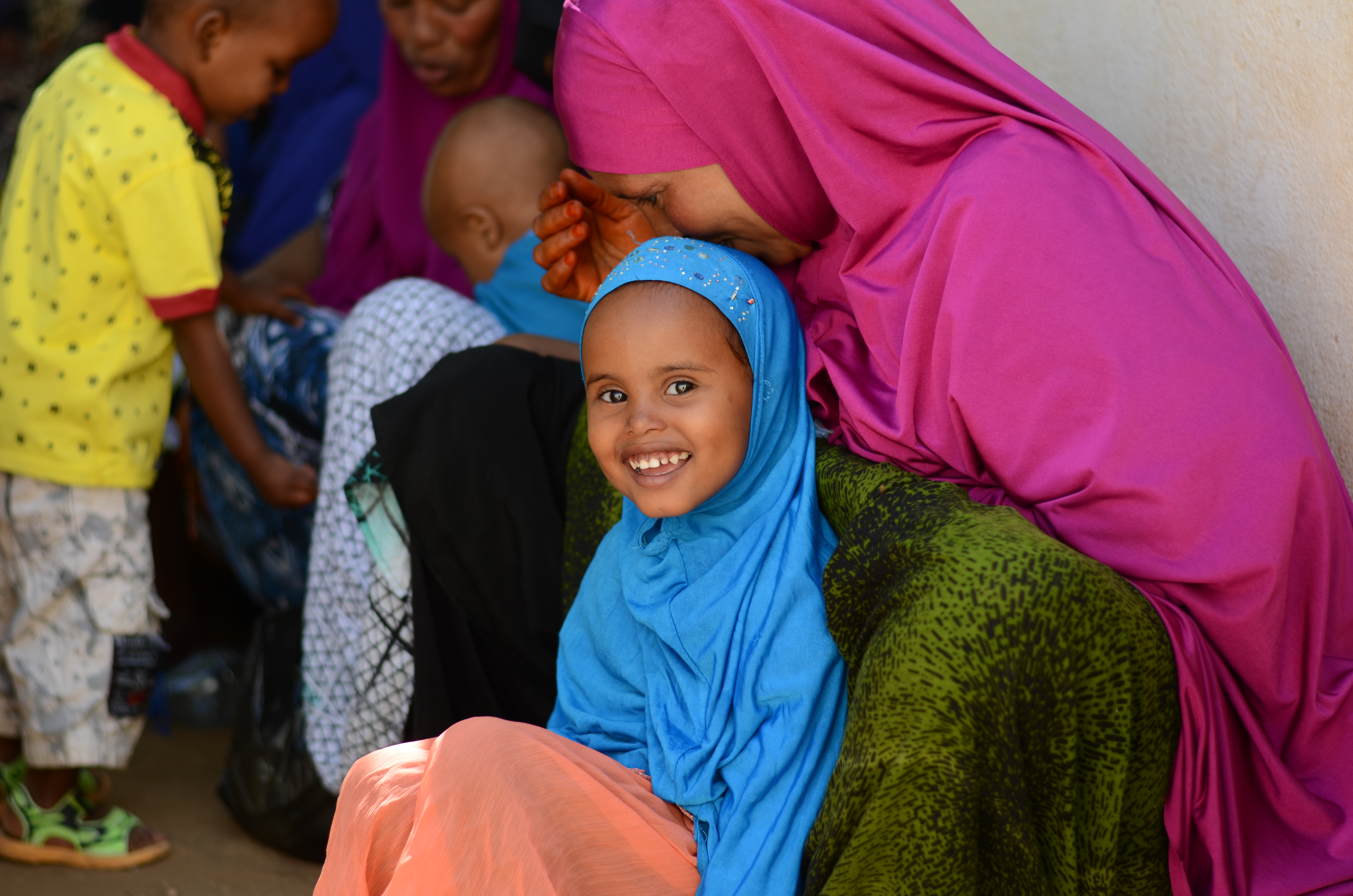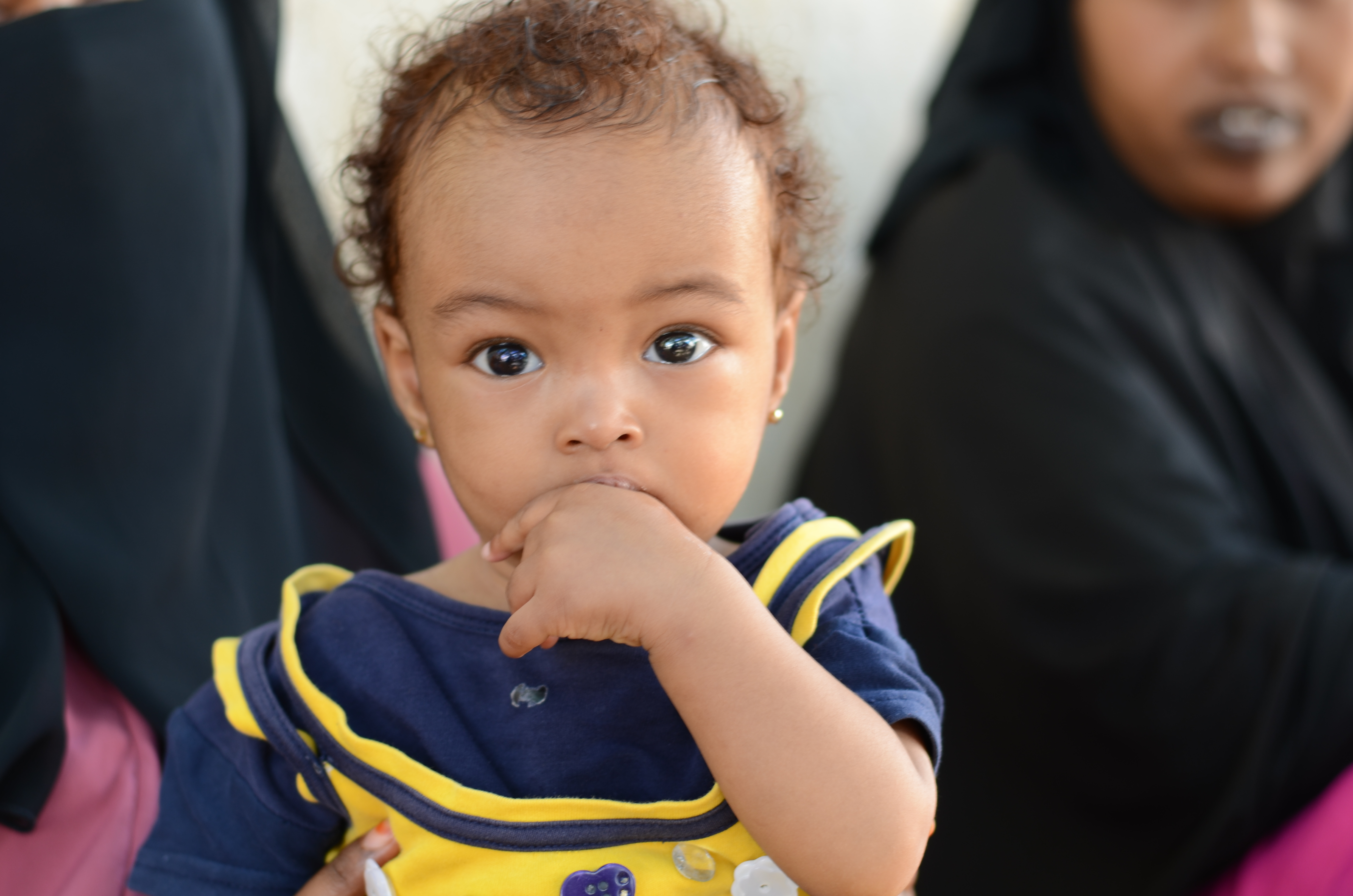
Helping malnourished children in Somalia
World Vision tackles malnutrition in children with the World Food Programme.
At a health clinic in rural Somaliland, Deeqa kisses her three-year-old daughter, Mushtar, on the forehead. “She was so sick, I thought she would die,” says Deeqa while holding Mushtar on her lap.
Eight months ago, Mushtar was so malnourished she had no ability to fight a common cold.
A two-year drought killed all of the family’s goats and cattle. Robbed of their only way of making a living, of their investment for the future, the family gave up on the life they knew.
Deeqa, her husband and their seven children moved to town, relying on a relative to provide room to live in their small yard.
They are among 6.2 million people in Somalia who have been affected by the ongoing drought. Water points have evaporated. Crops have withered and died. Goats, sheep, cattle, even camels – that farm families relied on for milk or meat – starved to death.
Children are the worst affected. More than 360,000 children under age five are malnourished.
The lack of food led Mushtar to become too thin, too weak. When the cold virus struck, Mushtar’s immune system couldn’t fight it. Soon, Mushtar began vomiting. It wouldn’t stop. Her temperature spiked. Deeqa was worried her youngest daughter wouldn’t survive.
Mushtar was rushed to the clinic and given emergency medication and high energy biscuits – cookies that are fortified with protein, vitamins and minerals. It saved her life.
It is a story repeated over and over at this health clinic.
Ismahan cradles her 10-month-old wide-eyed daughter Muna in her arms. This is her first child. Malnutrition threatened to steal this girl away too.
It’s the same for Hussien, another 10-month-old, whose weight was drastically dropping when there wasn’t enough food at home.

Muna Omar, a trained nurse who leads World Vision’s child nutrition project in Somaliland, says that the drought has forced mothers – who are themselves malnourished – to rely on feeding their babies breast milk only, long after the time they are supposed to be supplementing breast milk with food.
“The drought has seen a drastic rise in the number of children and mothers who don’t have enough to eat. Women are not producing enough breast milk to adequately provide for their children. It’s one of the reasons we’ve seen this malnutrition crisis,” Muna explains.
And yet, today, at this clinic, the mothers and children are smiling. The once malnourished Mushtar, Muna and Hussien are laughing and making faces at other children.

World Vision, together with the World Food Programme, has provided 16,612 children and 5,684 mothers with ready use supplementary foods and a monthly rations of nutrition packs jammed full of protein, vitamins and essential minerals to help malnourished children gain weight and become healthy.
The results are miraculous.
Mothers who were once malnourished now have enough breast milk and their babies are healthy. After two months, Deeqa has completely recovered and is now a healthy weight. Muna and Hussien have put on weight too.
World Vision and the World Food Programme are continuing their partnership to protect more children and mothers from succumbing to the worst effects of malnutrition.
Find out how you can support our work in Somalia.
By Mark Nonkes, World Vision East Africa Hunger Crisis
